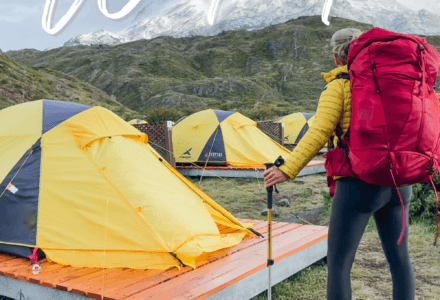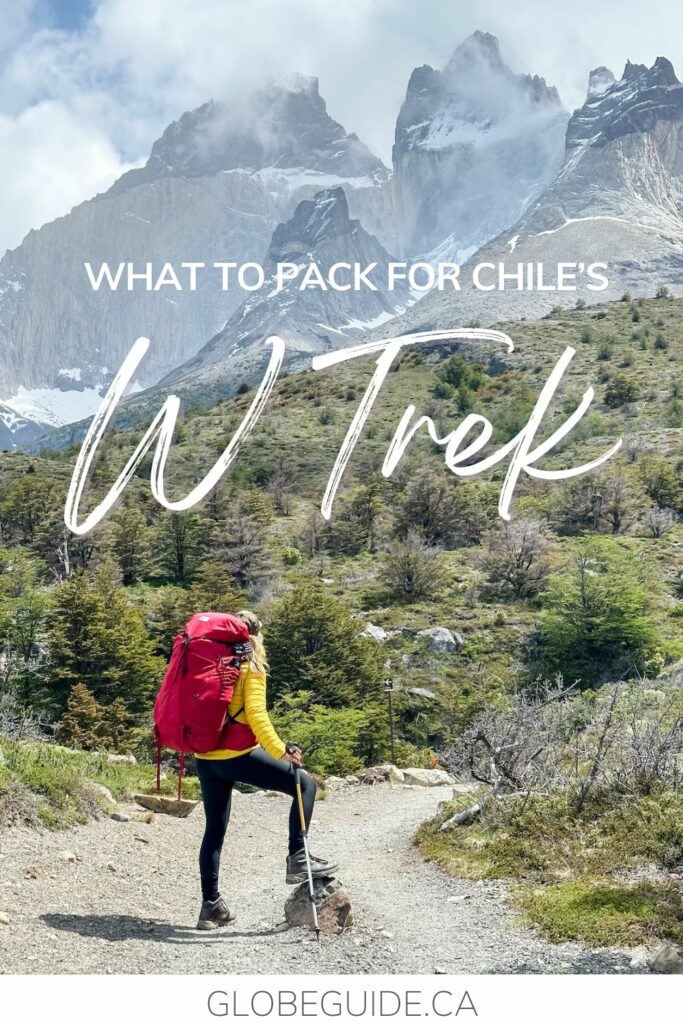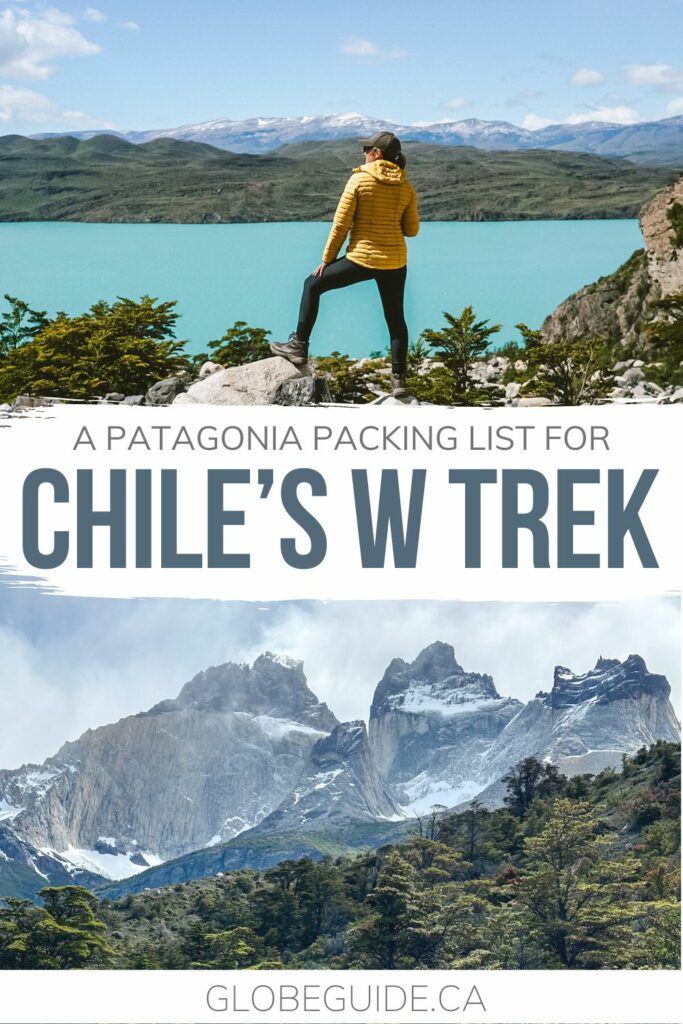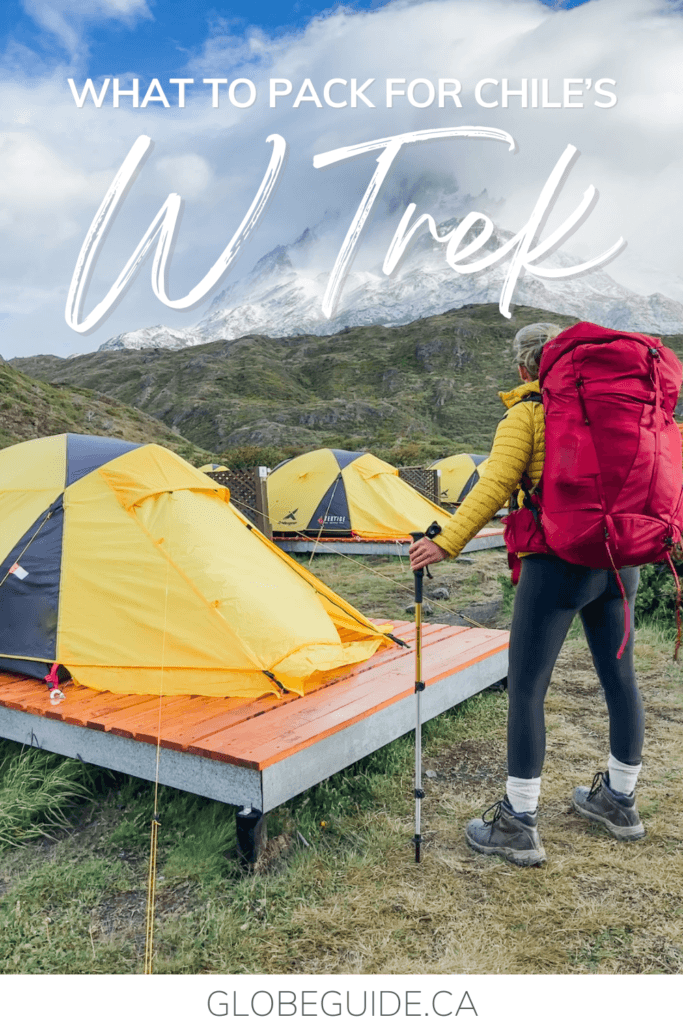The W Trek in Chile’s Patagonia region is one of the world’s most iconic hikes, a four-day, 64 kilometre adventure that winds past shimmering lakes, towering peaks and icy glaciers.
The weather is notoriously fickle in Torres del Paine National Park, and it’s not uncommon to experience all four seasons in an hour so preparation is key. Most hikers will also be carrying all of their gear along with food and sleeping bags, which makes it even more important to bring only the right items to minimize extra weight.
This Patagonia packing list outlines every single thing I brought when conquering the trail, the hits and misses, and a few key items you might not think to bring.
Download a FREE Patagonia packing list!
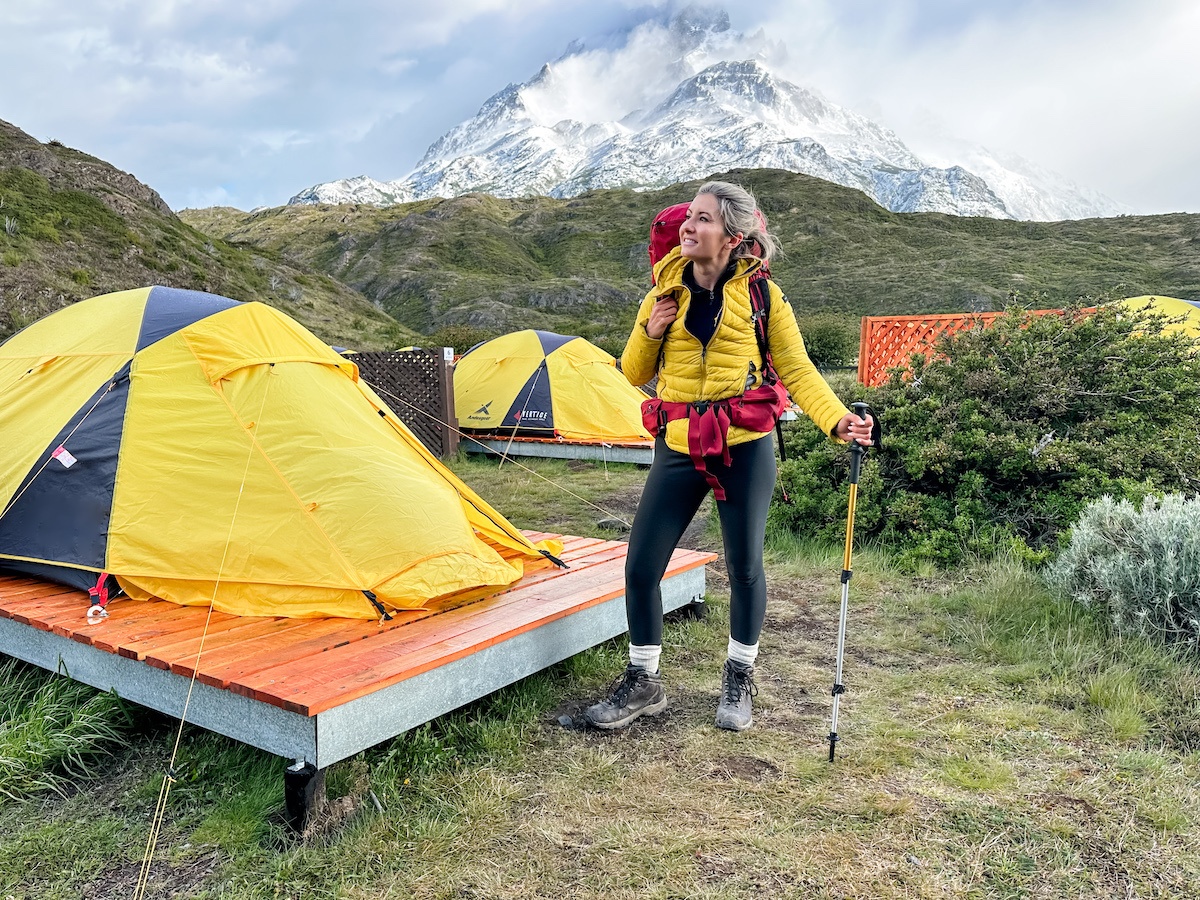
Gear to bring on the Torres del Paine W Trek
Trekking backpack
Picking the right trekking backpack is absolutely crucial to success on the trail. Not only does it need to hold all of your essentials, but you’ll also be carrying it for several full days so comfort and a good fit are essential.
I used this 45L backpack from Mountain Equipment Company, and it’s perfection. Lots of zipped and exterior pockets, a suspension system between the bag and your back for airflow, the option to open from both the top and side, and a detachable top flap. Its best feature is the supportive hipbelt which helps distribute the weight so your shoulders aren’t doing all the work.
It didn’t bother me one bit to carry all of my gear thanks to this supportive pack–10/10 recommend!
If you’re not lugging camera equipment, don’t need to carry food and pack minimally, you can get away with a 35-40L pack. Hikers bringing all of their own food and camping equipment will need a 60-70L bag (here’s the larger version of the one I love).
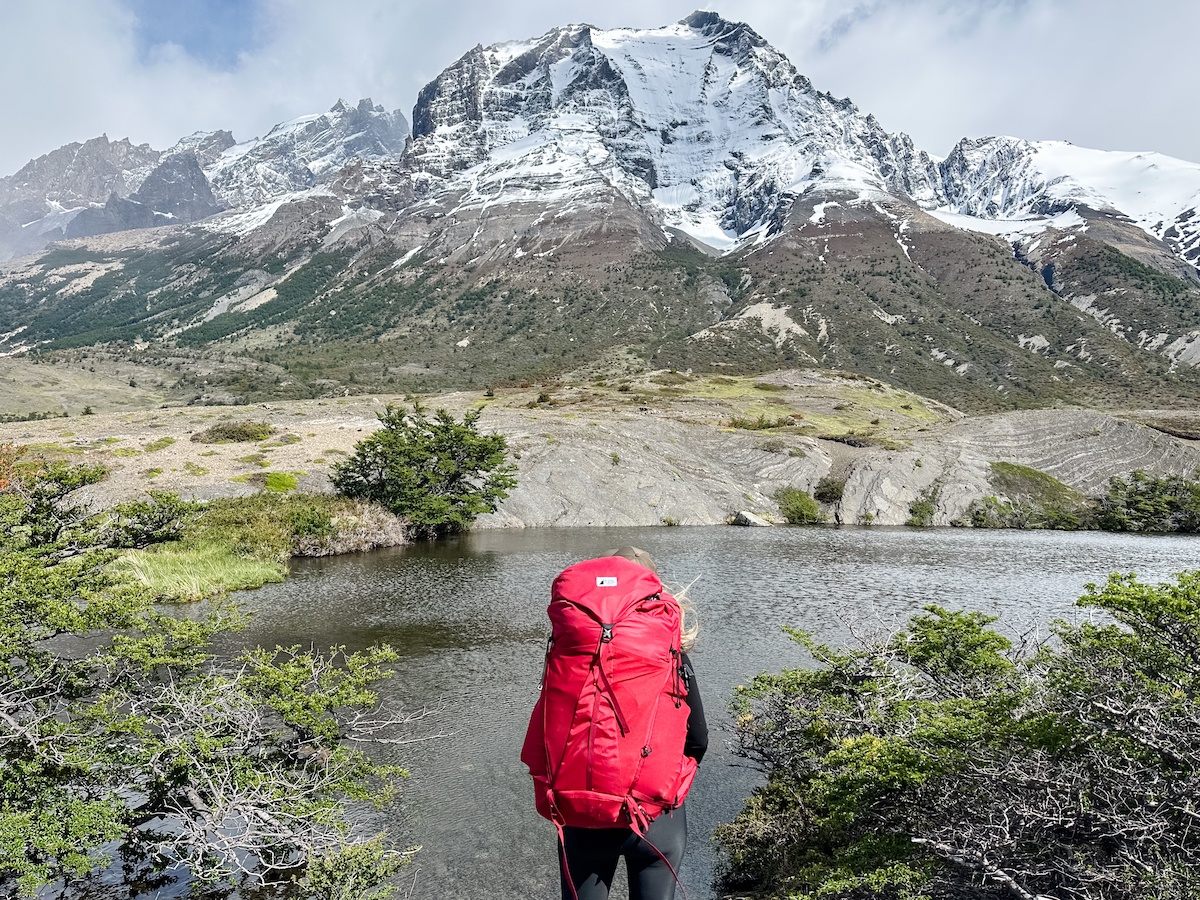
Day backpack
There are a few days on the trek when you’ll have the opportunity to leave your large bag behind to do out-and-backs (Mirador del Torres, the French Valley and Grey Glacier), so be sure to bring a smaller day bag to carry hiking essentials.
I love this Osprey backpack which has good support, and the red hue really pops in pictures.
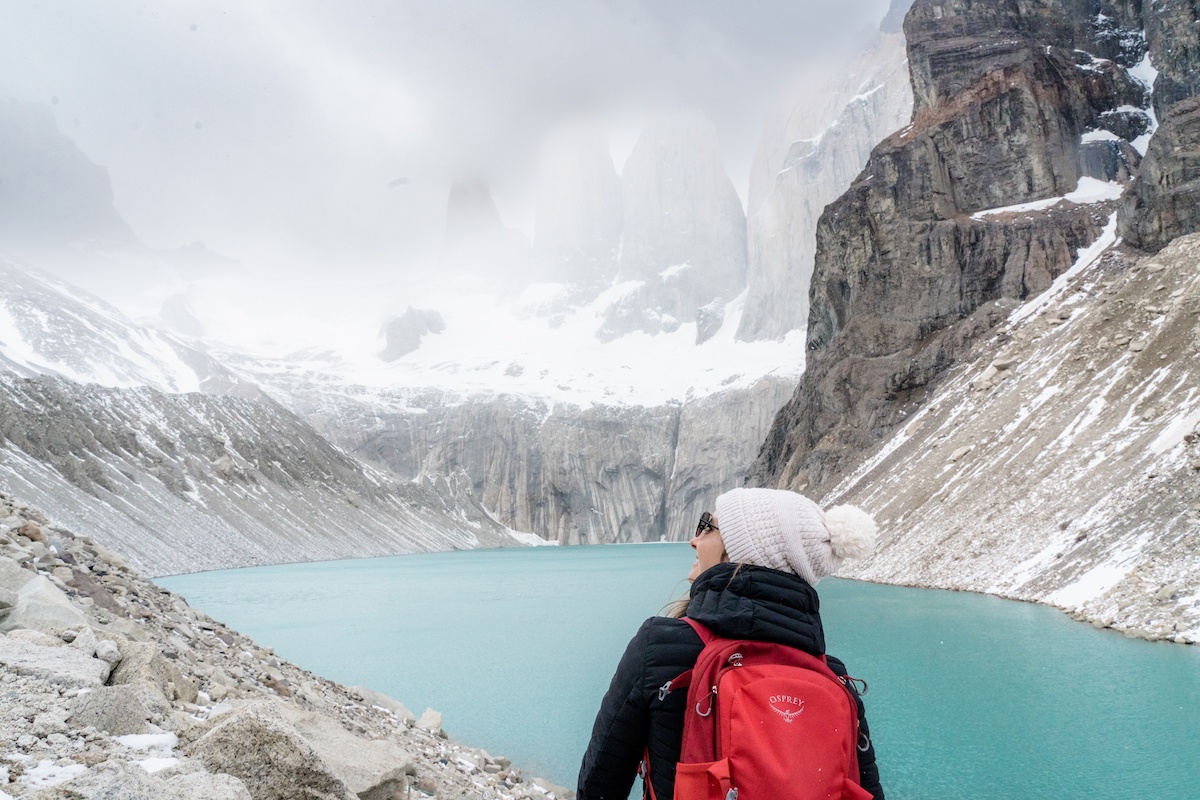
Hiking poles
I can’t even imagine doing the W Trek without a hiking pole. The terrain is very uneven, and these collapsible poles are clutch for water crossings and going down steep slopes.
Backpack rain cover
Keeping yourself and your gear dry is the key to success out here, so grab a rain cover to protect your pack during the inevitable storms.
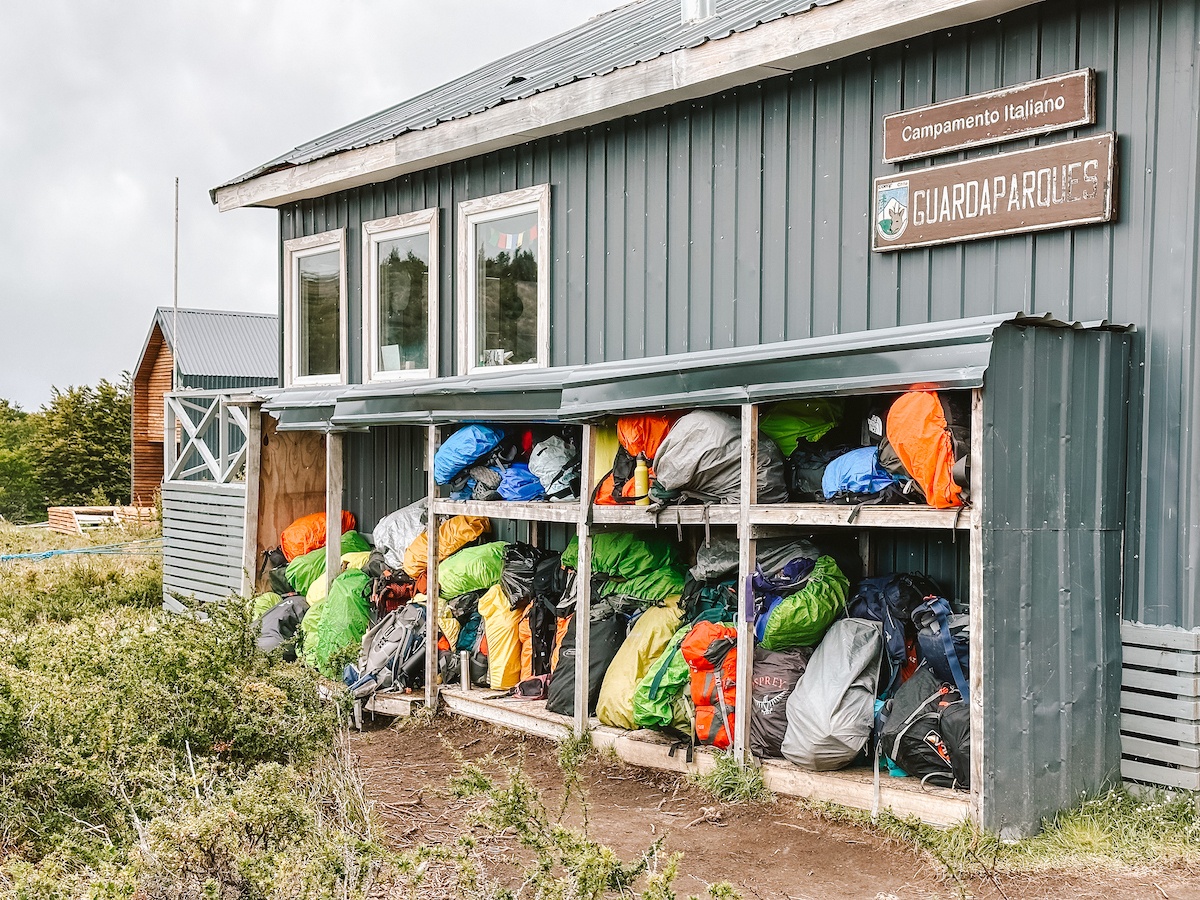
Sleeping bag and liner
While it’s possible to rent sleeping bags at the refugios, most people bring their own. A lightweight sleeping bag rated to at least -5 degrees is recommended—keep in mind you probably still won’t be toasty warm in that and will need to wear warm layers to bed or also use a sleeping bag liner.
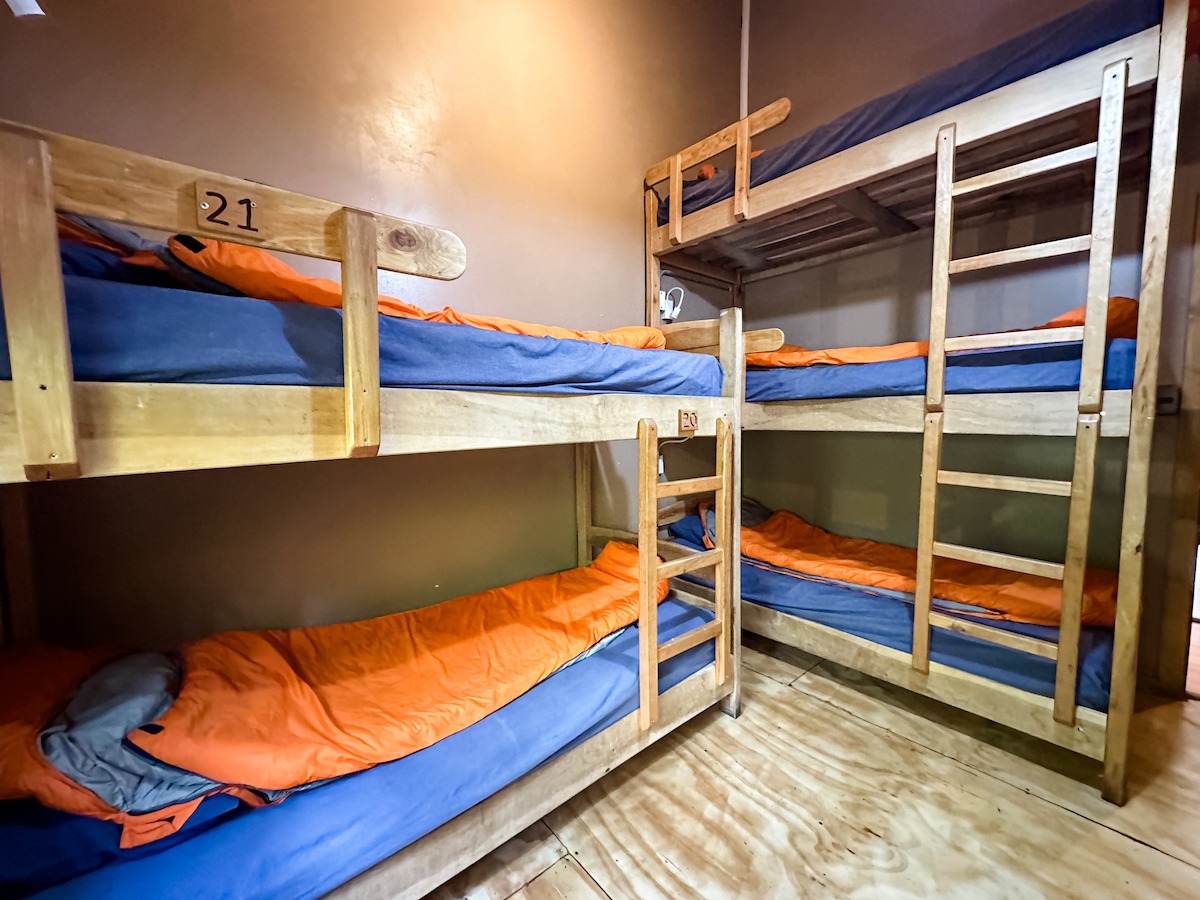
Travel pillow
I was PSYCHED to discover a set of pillows in my tent one night, but be warned, that’s the exception not the rule. You’ll want to bring along a compact pillow to rest your weary head at night, and there are a couple of options I’ve personally used.
This inflatable one gets top marks for how compact it is—however I personally find it a bit harder than I prefer. This Therm-a-Rest compressible travel pillow is my go-to for softness thanks to its soft foam filling, and it’s one of my fave travel pillows of all time (and I’ve tested a LOT of them). The downside is that it’s not quite as small when rolled up and is more expensive.
Stuff sacks and garbage bags
Organize all your essentials by using stuff sacks; I also recommend bringing a couple garbage bags for an extra layer of waterproofing.
Waterproof bag
Speaking of waterproofing, a must to include on a W Trek packing list is a lightweight waterproof bag like this one which also has straps for carrying. This is an item I find myself using time and time again to keep important items dry in a backpack while hiking, or during activities like whitewater rafting, kayaking and standup paddle boarding.
My go-to is the 20 version, but for the Patagonia W Trek it would have been helpful if I’d sized up to the 30 to hold a bit more.
Quick dry towel
There are definitely no towels in the campsite bathrooms—heck, there isn’t even toilet paper sometimes so be sure to pack a roll of that too. Bring a quick dry, microfibre towel to dry off after a much-needed shower.
Headlamp
There are few lights aside from the moon and stars, so a headlamp is helpful for those late night bathroom runs. When we were at Refugio Frances our tent was nestled among the trees which made the inside pitch black, so this headlamp even came in handy during the day!
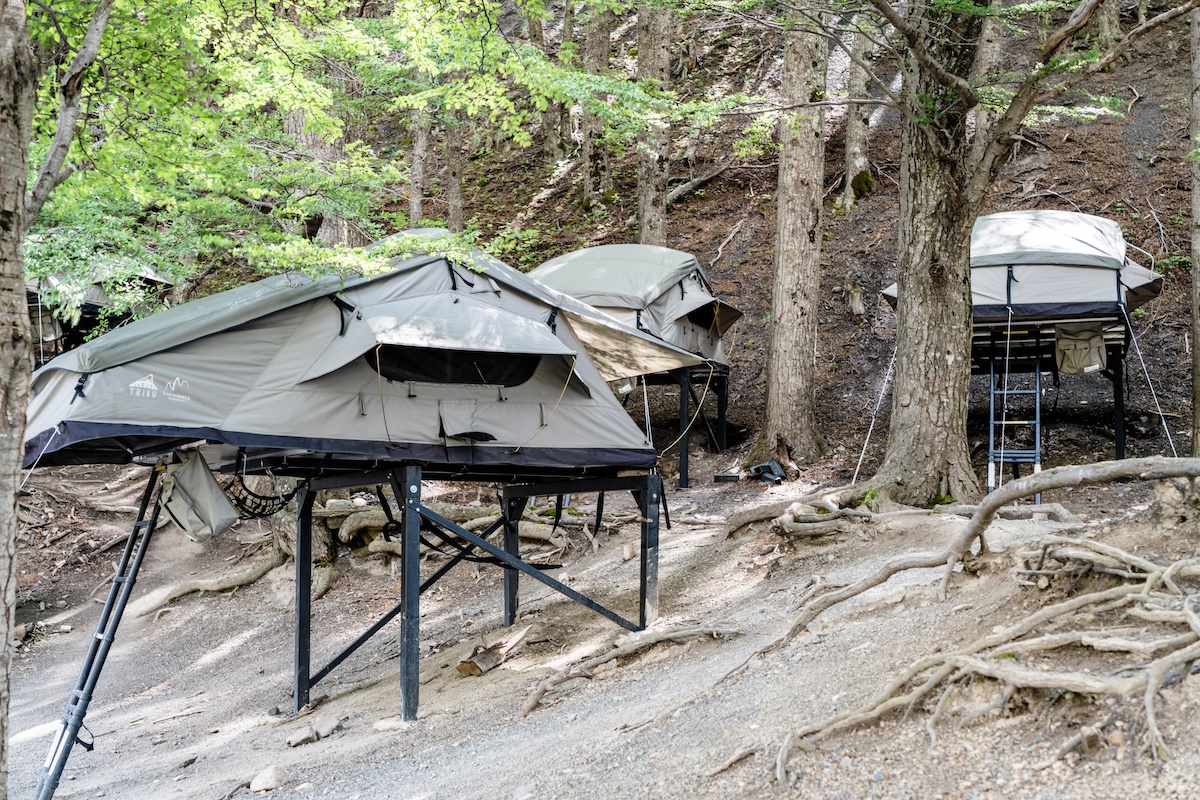
Water bottle
Hydration is critical during the W Trek, and fortunately it’s pretty easy to do since the glacial water is so clean you can drink right out of the streams without treating it. With that in mind, opt for a smaller lightweight water bottle instead of a clunky one since there’ll be lots of opportunities for refills during the day.
Portable charger(s)
Power outlets are available inside the refugios to charge devices (remember to bring a converter for the three-prong South American outlets)—however, they can be in high demand. A more convenient option is to bring a portable charger; in fact, I brought two.
I love this tiny Anker power bank which is good for a few charges and plugs straight into your iPhone so no cord is required. I also use this larger Anker portable charger which has USB-C and USB-A ports for simultaneous charging of different devices.
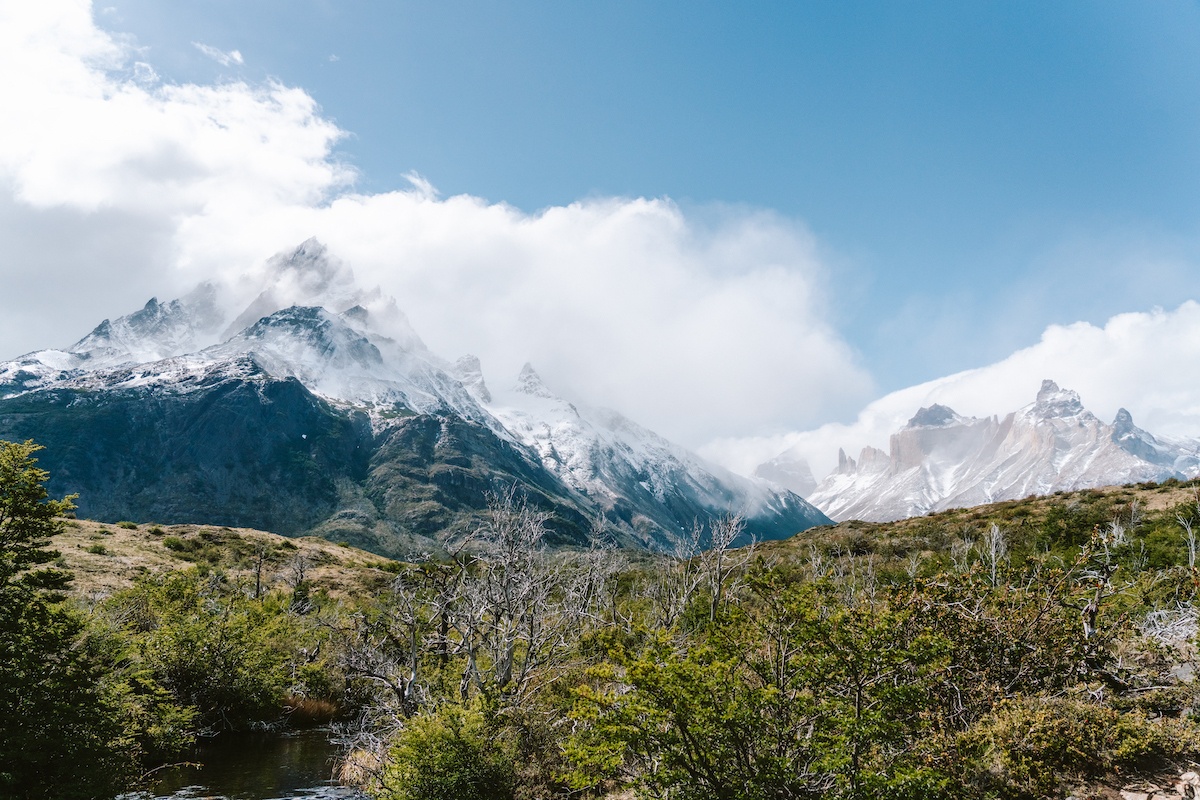
Clothing and outerwear for the Patagonia W Trek
Down jacket
I brought two warmer jackets with me just in case one got wet; the first is my go-to lululemon Pack It Down Jacket which has 700-fill-goose down, a detachable hood and is water resistant and windproof.
I’m also obsessed with this budget-friendly find from Decathlon, which is packable yet somehow keeps me toasty warm without being bulky. It also comes in an amazing sunshine-yellow colour which looks awesome in photos.
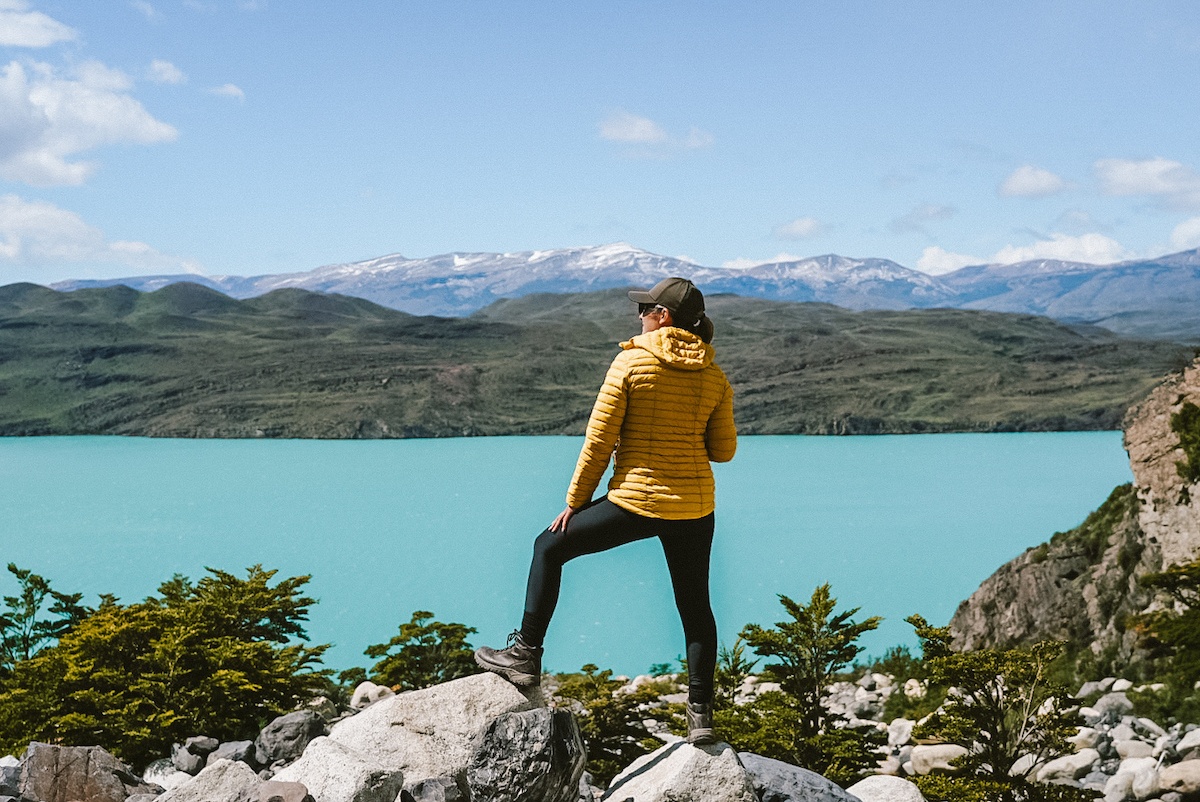
Hiking boots and socks
A solid pair of hiking boots will be your absolute best friend during the W Trek. Waterproofing is non-negotiable—you WILL walk through water—and look for a boot with ankle support. Remember to wear them in first, since blisters are the bane of a hiker’s existence.
Bring at least a couple pairs of hiking socks in case one gets wet or smelly: I have a few pairs of these Smartwool hiking socks and highly recommend them—remember, no cotton!
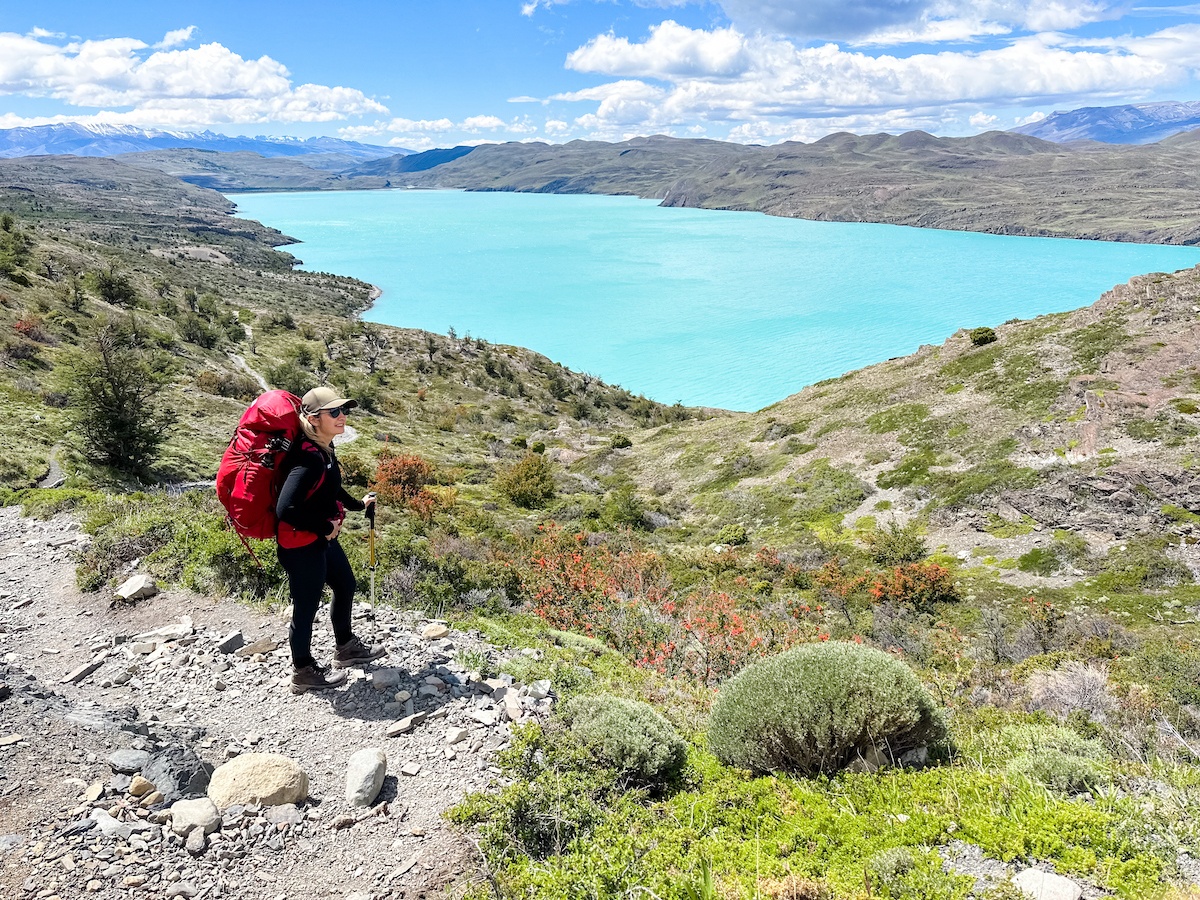
Camp slippers
I can’t tell you how many times during the day I thought about the blissful moment that evening when I’d get to kick my big boots off and slide into these slippers. They’re warm and cushy inside, water-resistant and have a rubber sole so they can be worn outside.
They’re a tiny indulgence that’s definitely worth the space they take up in a pack since your tootsies will be begging for a break after 30,000+ steps each day, and there’s also a bootie version.
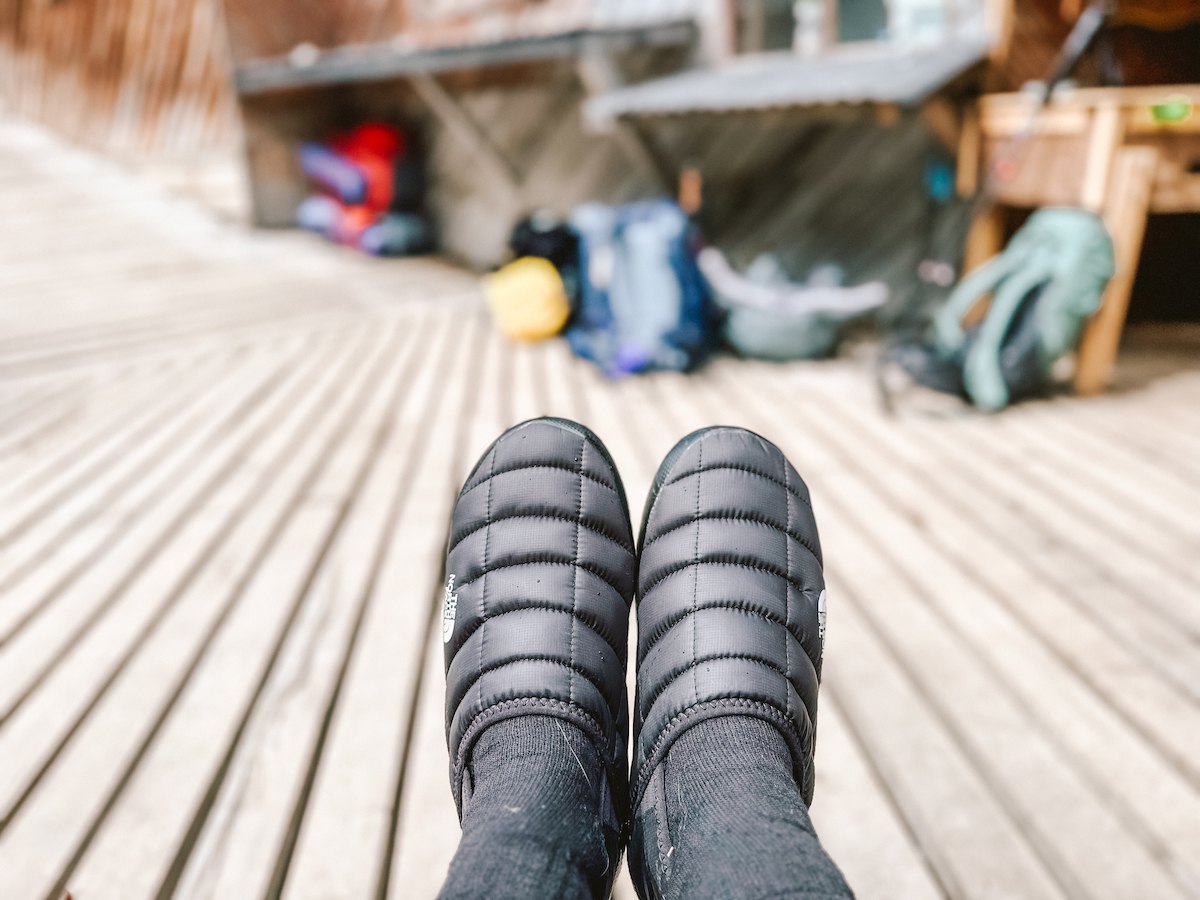
Hats and gloves
At a minimum, bring a ball cap for sunny days (and hiding the hair you won’t wash for three days) and a warm toque/winter hat. I also had this fleece headband which keeps ears protected from the wind without feeling too heavy.
It’s usually possible to get away with just one pair of lightweight gloves, but I was also glad I brought thicker down ones for colder sections of the trail and as a backup when my other ones got wet.
Rain jacket and pants
If it doesn’t rain during your W Trek, then you should probably go buy a lottery ticket. Precipitation is common in these mountains (especially in shoulder season months like October, November and April) so a rain jacket and waterproof pants are important to bring.
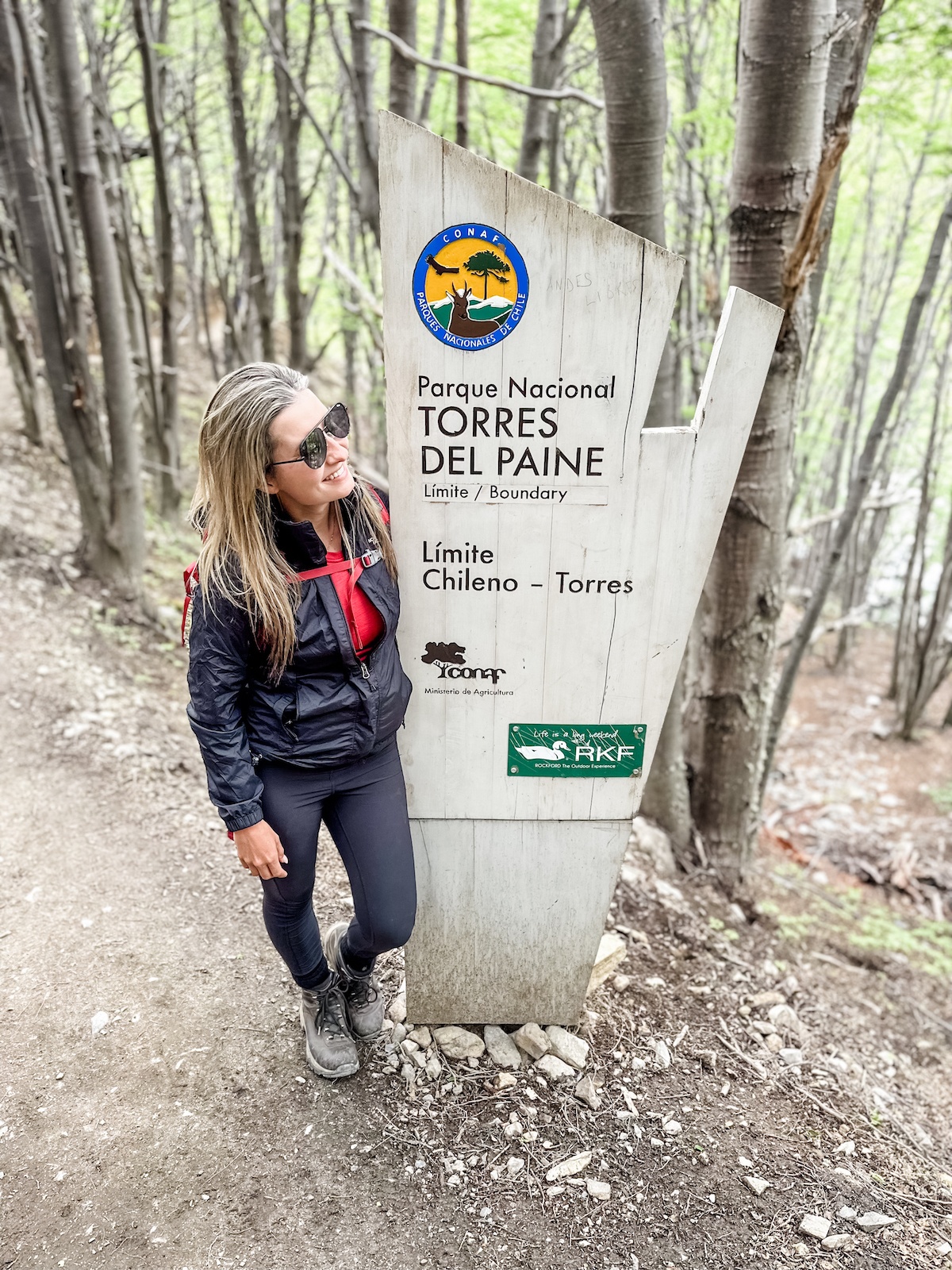
Clothes
A couple pairs of pants, a pair of shorts in hotter months, a couple of tank tops and two or three mid layers are all you’ll need.
Sweat-wicking fabric is best, especially merino wool. Be careful when buying clothes that say ‘merino wool’ on them, since the percentage might be low: I have a few Smartwool 250 Baselayer shirts which are 100 per cent merino wool.
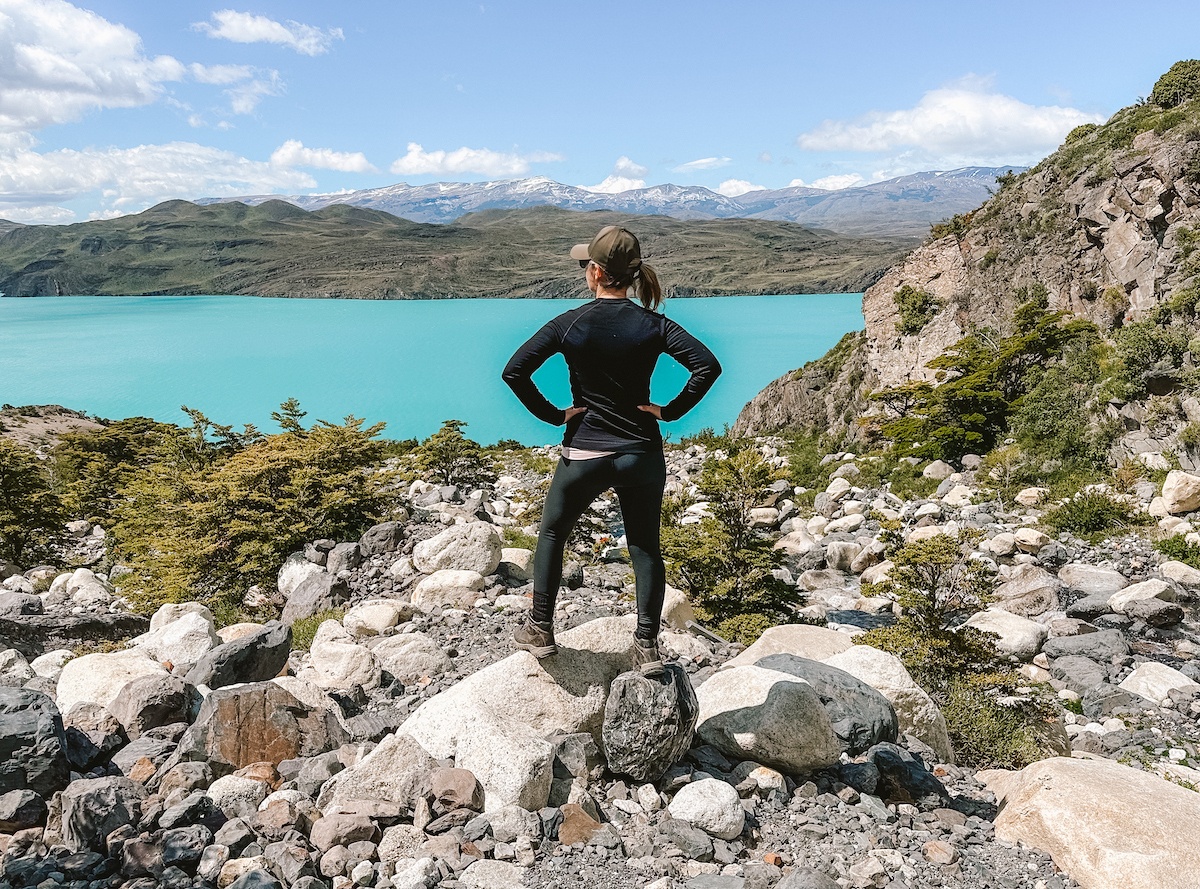
Patagonia packing list: Miscellaneous items
- Sunglasses
- Hand and foot warmers if hiking early or late in the season when the weather is colder
- Underwear
- First-aid supplies including Advil, band-aids and blister care.
- Pajamas (optional, since you might need to wear warmer layers like Smartwool)
- Toiletries (pack only the most basic essentials—the awkward setup at the camp bathrooms makes it impossible to primp)
- An e-reader or cards to help pass the downtime in your tent
- This eye mask—the sun doesn’t set until quite late in Chile from November-March, and some campsites have yellow tents which make everything even brighter when you’re trying to sleep.
- Chilean pesos, since credit cards are accepted at most of the refugios but you’ll be SOL if there’s a connectivity issue which can often happen in Patagonia.
- Sunscreen is very important if hiking in the warmer months; I went in November and was fully covered up most of the time but made sure to wear tinted moisturizer or CC cream with SPF on my face everyday.
Download a FREE Patagonia packing list!
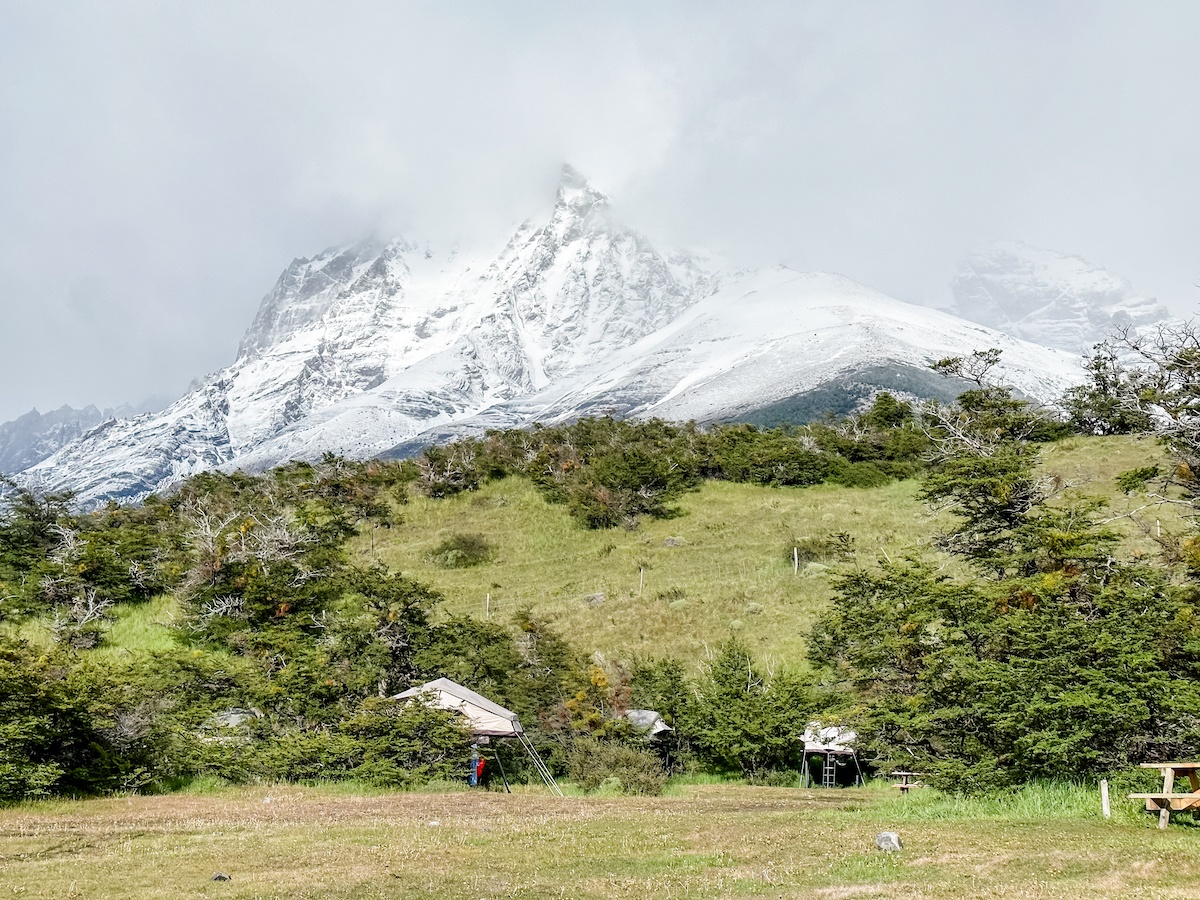
YOU MIGHT ALSO ENJOY:
- The complete hiking packing list for trekking in Patagonia, Argentina
- 5 reasons to go backpacking in South America
- Epic hiking spots you need to add to your bucket list right now
- The ultimate guide to the Torres del Paine W Trek in Chile
SHARE THE PINSPIRATION! CLICK THE IMAGES BELOW TO PIN:
This post may contain affiliate links, which Globe Guide receives compensation for at no additional cost to you.

